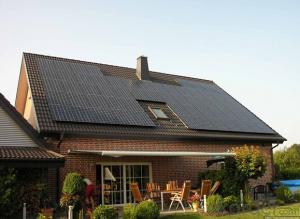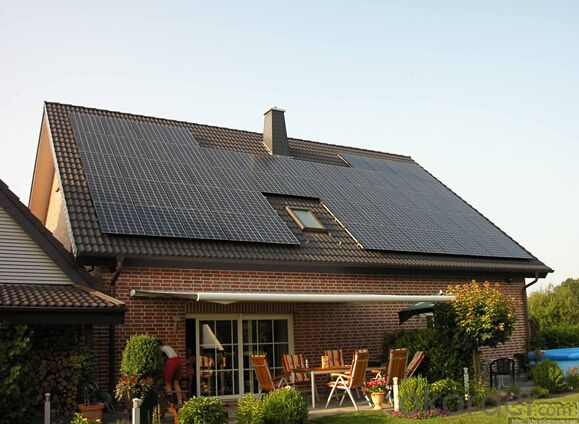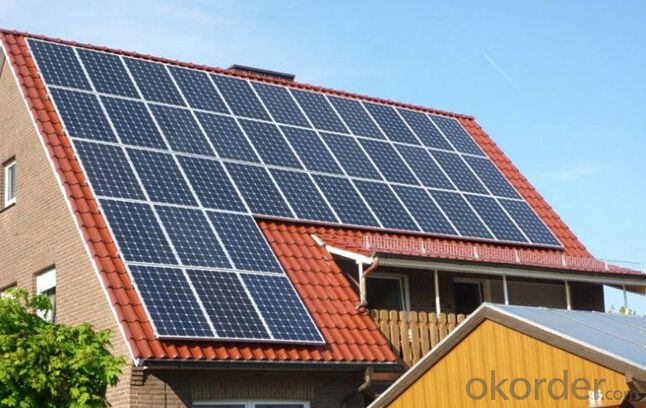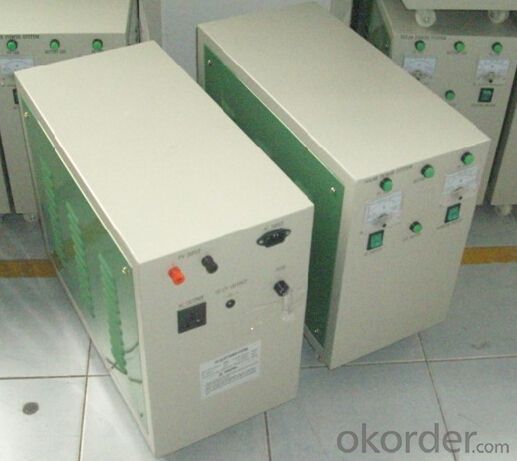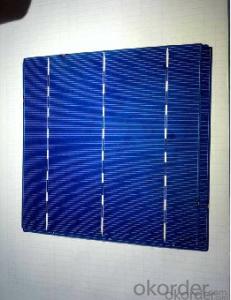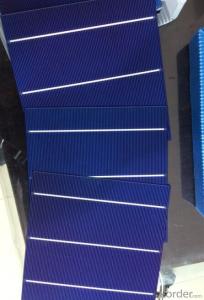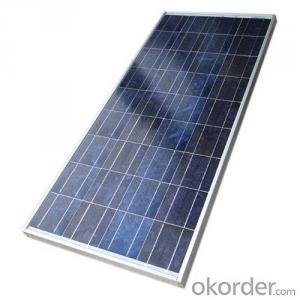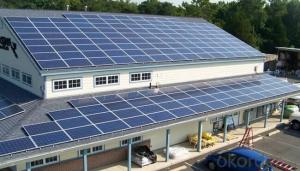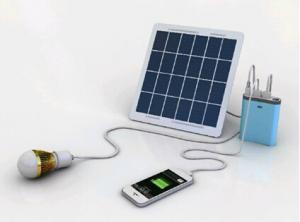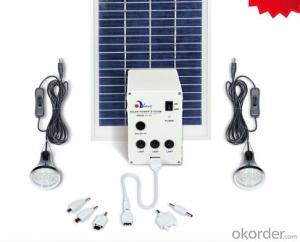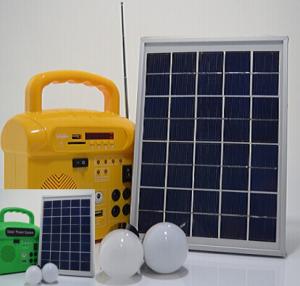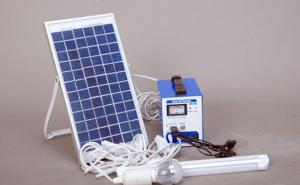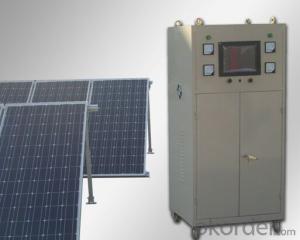Solar Cells Buy CNBM Solar Roof Solar System 30KW-$50000/Set
- Loading Port:
- Shanghai
- Payment Terms:
- TT OR LC
- Min Order Qty:
- 1 set
- Supply Capability:
- 30000 set/month
OKorder Service Pledge
OKorder Financial Service
You Might Also Like
Introduction of Solar Home System
Solar Home System is composed by Solar Panels, Inverters, Charger Controller, Battery, Cable, Mounting Bracket, which is applied to produce electricity for home use.
Solar Home System is quite suitable product in urban area and the place which is short of electricity. Our Small Solar Home System own great benifits compare with other kind electricity resources:
Our company’s main target is to make every family can use cheap solar energy and enjoy the new innovation of modern science and technology.
Working Principle of Solar Home System
The stand alone Solar Home System is an off-grid solar system which uses batteries to store the solar energy. Stand alone solar system solutions design for those who are not able or willing to connect to electricity grid.
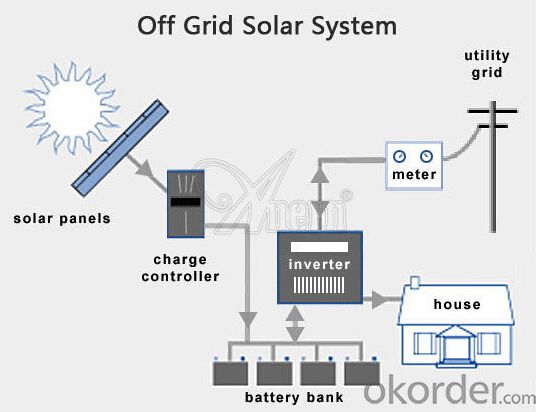
Customer Home Appliance Situation
Customer’s home appliance’s consumption is 76980W Per day. The designed system is on the basis of 2 working days.
Electric Appliances | Power Consumption | Quantity | Working Hours | Consumption |
Central Air Conditioner | 15 P | 1 | 6 | 67500 |
Fridge Freezer | 120W | 1 | 6 | 720 |
Deep Freezer | 120W | 1 | 6 | 720 |
Lamps | 150W | 1 | 6 | 900 |
TV | 120W | 3 | 6 | 2160 |
DVD Player | 50W | 3 | 6 | 900 |
Surround Speaker | 10W | 3 | 6 | 180 |
Computers | 150W | 2 | 6 | 1800 |
Printer | 150W | 2 | 6 | 1800 |
Solar Lanterns | 50W | 1 | 6 | 300 |
Total |
|
|
| 76980 |
Product Features of Solar Home System
1. Off grid solar power system is mainly used for application with relatively-small power consumption, and the areas have no grid network coverage, or grid power is unstable or outage condition.
2. It’s composed of solar panels, hybrid solar inverter, battery bank, solar panel mounting racks, and other accessories required fora complete home solar power system.
3. The battery bank gives a stable power output to the solar inverter which converts DC to AC to power loads, and provides power backup in rainy or cloudy days.
4. The solar panels generate electricity at daytime and charge the battery bank.
5. The off grid home solar power system provides grid power bypass in case of battery power shortage when sunshine is not enough.
6. All the off grid home solar power system configurations are worked out by scientific calculation and design.
Advantage of Our Solar Home System
1 Excellent Performance: Our Solar Home System is composed by Brand Standard Kits with high quality. Our solar system has the advantage of high efficiency and stable operation. We can ensure our product with a long life period.
2. Small Orders Accepted: We can accept small orders as our customer’s trial order.
3. Warehouse: We have warehouse overseas which can bring great convenience to our customer to pick up the products.
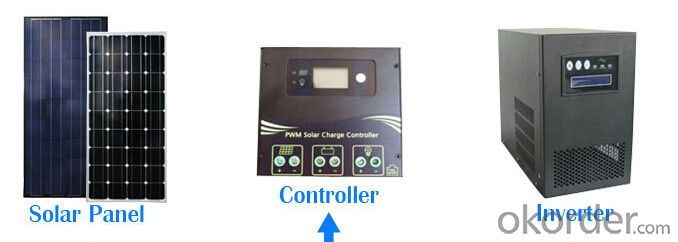
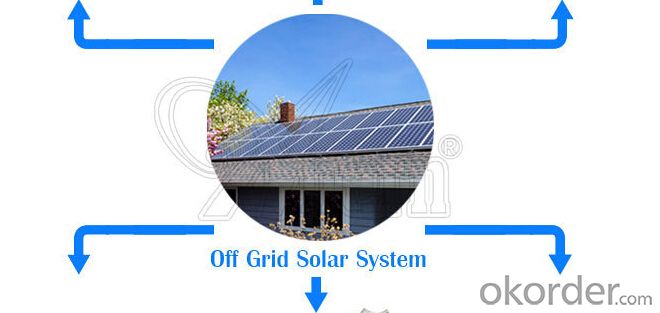

Terms and Conditions
1. Trade terms: FOB Shanghai
2. Payment terms: 30% T/T, balanced before shipment/ LC at sight before shipment. Actual Terms can be negotiated for big order.
3. Package: Exported standard package suitable for tough handling and sea transport.
4. Delivery: Goods to be ready within 10~30 days depending on order quantity.
5. Warranty: 10 years for solar panel, 2 years for controller/inverter/battery.
FAQ
Q: Could you introduce the background of your company?
A: We are a Group corp. with 1GW capacity in China, which is Okorder’s registered VIP Supplier, possess Financial Service from Okorder.com.
Q: Required mainly certificates (CE&IEC/TUV/RoHS)?
A: Our products are certificated by CE RoHS, IEC, ISO, TUV, UL etc.
Q: Your main exported market is?
A: Main markets of our products is: South-east Asia, Mid-east, Arica, East Europe and Latin America.
- Q: How do solar cells perform in areas with high levels of air pollutants?
- Solar cells generally perform less efficiently in areas with high levels of air pollutants. Air pollutants, such as smog, dust, and particulate matter, can accumulate on the surface of solar panels, reducing their ability to absorb sunlight. This buildup of pollutants creates a barrier between the sun and the solar cells, decreasing their overall performance and energy production. Additionally, air pollutants can also block and scatter sunlight, further diminishing the amount of sunlight reaching the solar cells. Therefore, in areas with high levels of air pollutants, regular cleaning and maintenance of solar panels are necessary to ensure optimal performance.
- Q: What is the size and weight of a typical solar cell?
- The size and weight of a typical solar cell can vary depending on its intended application and technology. However, a standard silicon-based solar cell is typically square-shaped with dimensions ranging from a few centimeters to around 15 centimeters on each side. In terms of weight, most solar cells are quite lightweight, typically weighing between a few grams to around 100 grams, depending on the size and material used.
- Q: How do solar cells perform in areas with high levels of electromagnetic interference?
- Solar cells may be affected by high levels of electromagnetic interference (EMI) in areas where strong electromagnetic fields or radio frequency signals are present. EMI can disrupt the normal functioning of solar cells, leading to reduced efficiency or even complete failure in extreme cases. To overcome this issue, it is important to employ proper shielding and grounding techniques to minimize the impact of EMI on solar cells. Additionally, advanced designs and technologies are constantly being developed to enhance the EMI tolerance of solar cells, ensuring their optimal performance even in areas with high levels of electromagnetic interference.
- Q: How do solar cells perform in low-light conditions?
- Solar cells perform less efficiently in low-light conditions compared to bright sunlight. This is because they rely on the energy from photons in sunlight to generate electricity. In low-light conditions, such as on cloudy days or during sunrise and sunset, the number of photons reaching the solar cells decreases. As a result, the conversion of light energy into electrical energy is reduced, leading to lower power output. However, advancements in solar cell technology have improved their performance in low-light conditions, enabling them to generate some electricity even in dim lighting.
- Q: Can solar cells be used in agricultural farms?
- Yes, solar cells can be used in agricultural farms. Solar energy can be harnessed through solar panels to power various farm operations, such as irrigation systems, lighting, and equipment. This can help reduce reliance on fossil fuels, decrease energy costs, and promote sustainable practices in agriculture.
- Q: Can solar cells be used in off-grid systems?
- Yes, solar cells can be used in off-grid systems. Off-grid systems, also known as standalone systems, are independent of the traditional electrical grid, and solar cells are a reliable and cost-effective way to generate electricity in such systems. By harnessing sunlight and converting it into electricity, solar cells can provide a sustainable and renewable energy source for off-grid applications such as remote cabins, boats, or even emergency backup power systems.
- Q: What is the most commonly used material for solar cells?
- Anyone of these is the materials for making the solar cells: Crystalline silicon solar cell, silicon solar cell, silicon solar cell. Amorphous silicon cell: thin film solar cells, organic solar cells. Chemical dye cell plate: dye sensitized solar cell.
- Q: Can solar cells be recycled?
- Yes, solar cells can be recycled. The process involves separating the different components, such as glass, metals, and semiconductors, and reusing or repurposing them for new solar cell production or other industries. Recycling solar cells helps reduce waste and environmental impact while also conserving valuable resources.
- Q: What materials are used in solar cells?
- The most common materials used in solar cells are silicon, which is the dominant material in the market, as well as other materials such as cadmium telluride, copper indium gallium selenide, and organic materials like polymers.
- Q: What are the safety considerations when installing solar cells?
- When installing solar cells, it is important to consider several safety precautions. First and foremost, it is essential to work with a qualified and experienced installer who understands the necessary safety protocols. Additionally, proper electrical safety measures should be taken, such as turning off the power supply and using insulated tools. It is crucial to follow all manufacturer instructions and guidelines to ensure safe installation. Working at heights should also be approached with caution, using appropriate fall protection equipment when necessary. Lastly, it is important to be aware of potential hazards such as sharp edges, hot surfaces, and electrical shock risks. Regular maintenance and inspections should be conducted to ensure ongoing safety.
Send your message to us
Solar Cells Buy CNBM Solar Roof Solar System 30KW-$50000/Set
- Loading Port:
- Shanghai
- Payment Terms:
- TT OR LC
- Min Order Qty:
- 1 set
- Supply Capability:
- 30000 set/month
OKorder Service Pledge
OKorder Financial Service
Similar products
Hot products
Hot Searches
Related keywords
